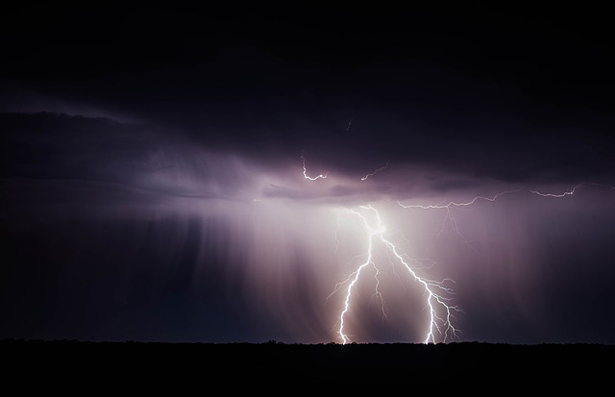Lightning strikes can cause major damage to electronic devices, and no one is exempt from the potential damage that lightning can cause. Even Google and Amazon with all their technological capability and resources have been affected by data loss caused by lightning strikes.
While a person is not at risk of physical injury unless their house, power line or phone line is subjected to a direct lightning strike, sensitive, expensive electronic equipment, like computers, modems and fax machines, can sustain damage from lightning strikes up to a kilometre away from the line. Damage can be caused through telecommunications lines as well as power lines.
Having to replace your computer or any other appliance is bad enough, but losing all the data that you have on your hard drive is potentially much more costly and inconvenient. That’s why the first rule in guarding against storm activity should be to regularly backup all your computers’ files to a data storage device.
When Lightning Strikes
Essentially, what happens when lightning strikes is that a huge power surge is generated with loads far exceeding the normal 240 volts that a household receives through its power lines. The overload in power can result in serious damage to electrical devices.
The damage can be costly, time consuming and permanent. The device can be “fried” when conductors (wires) heat up and burn, or the overload in voltage can cause a short circuit when the insulation that separates the conductors breaks down.
If your electrical appliance is plugged into a wall socket that’s switched on, it is at risk during an electrical storm. This applies to all those appliances that you may have switched off or are in sleep mode. Lightning current will travel through your power cord or any other data cable that you have connected to your appliance, device or computer. If you are aware that an electrical storm is imminent, then you should disconnect your computer and other electronic devices from the mains supply to safeguard against a power surge.

Surge Protection
Of course, there will be times when you are not forewarned or not at home to take any preventative action. That’s why installing a surge protection device is a good idea.
Surge protection devices can be effective in coping with most power surges.
Multiservice Surge Protective Devices (MSPD) are very popular, being relatively inexpensive and easy to install. They are a power board containing both telecommunication and mains power protection. While MSPDs are freely available at varying costs from nearly all computer and electrical stores, they do have differing quality standards. The Everest Electrical team is happy to advise our clients about MPSD performance.
Notwithstanding quality levels, all MSPDs may occasionally be at risk of damage from close or direct strikes especially if “direct strike protection” is not installed.
For the best possible protection, all interconnected equipment (computer, modems and printers) should be connected to the same MSPD. If this is not possible and you are on Sydney’s North Shore or Northern Beaches – call us for advice.
While MSPDs will certainly guard against most situations they may not protect your equipment in case of direct strikes.
To guard against direct strikes on the power line, it will be necessary to install a surge protective device (SPD) in the main electrical switch board. This work can only be performed by a licensed electrician. Again, if this is what you need by all means call us.
We are on hand to help you to install the right protection to suit your situation. Call the friendly team at Everest Electrical today on 0410 229 139 to make an appointment to discuss your needs.

